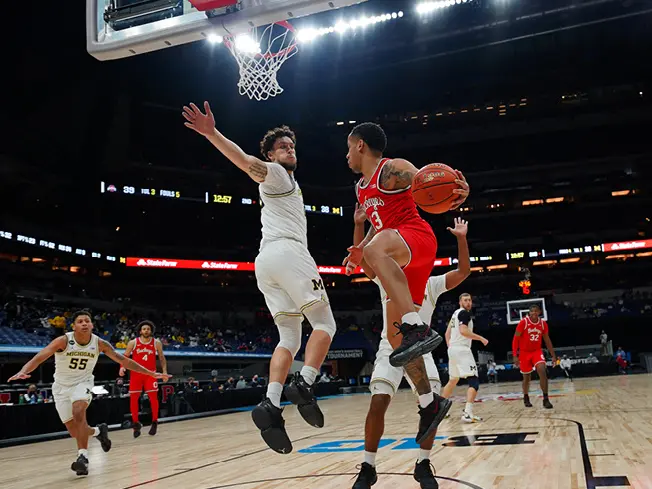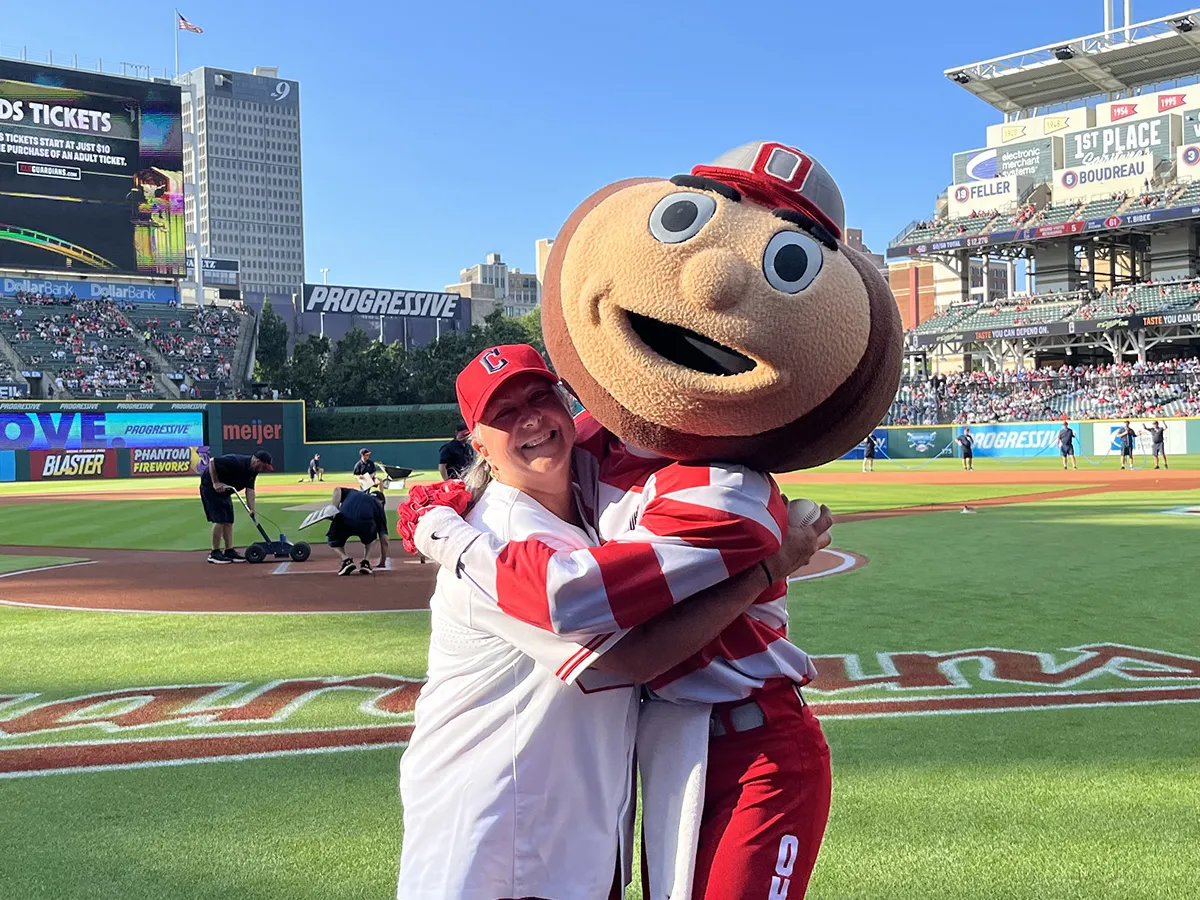A delicate balance
Staying mentally prepared to cope, let alone compete, was an uphill climb during a pandemic that tossed aside schedules, training plans and other constants of college sports. Their caring community helped our student-athletes carry on.
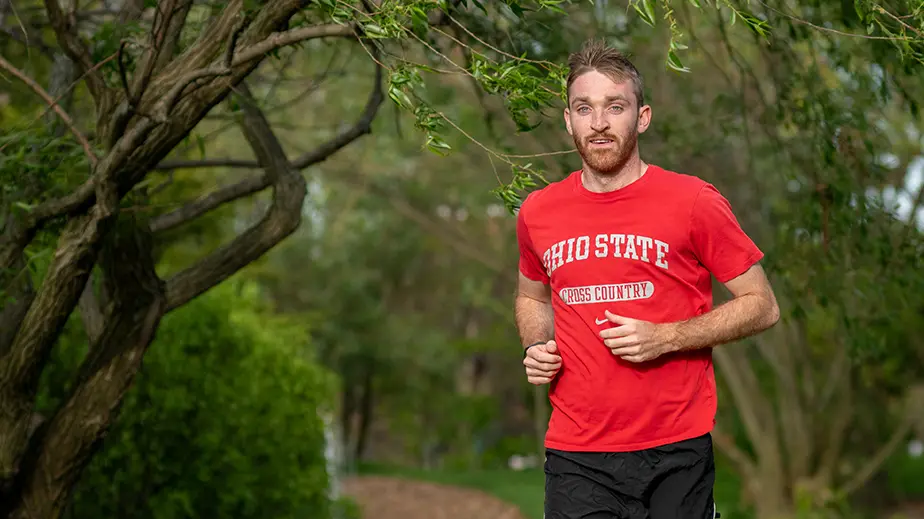
Cross country team member Peter Hayden runs near Chadwick Lake. Photo by Jo McCulty
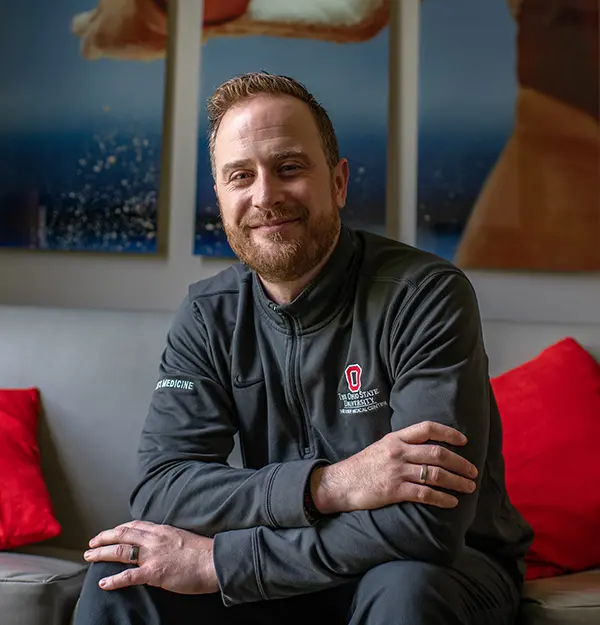
Sport psychologist Jamey Houle and his peers adapted their services to help student-athletes through their extraordinary seasons. Photo by Jo McCulty
When the pandemic hit, everything changed, including the university’s approach to sport psychology. From the start, the Ohio State athletics department placed a heavy emphasis on mental health, says sport psychologist Jamey Houle ’04. In fact, Sport Psychology and Wellness Services was the only group in the athletics department that did not experience furloughs in 2020.
“That showed the support for mental health and our athletes,” Houle says, “and that’s one of a thousand ways [athletics department leaders] have done it.”
Those ways included assigning a specific point person from the sport psychology team to every athletic team. In years past, student-athletes would contact Sport Psychology and Wellness Services directly or connect with a counselor through their athletic trainer. The change this year underscored psychologists’ role as an integral part of the athletic performance team, Houle says, and allowed therapists to work closely with coaches to help student-athletes.
But the biggest adjustment, he says, is that one-on-one sessions went virtual, which allowed the department to reach more athletes than ever before. Houle had long been a proponent of in-person therapy, but he’s changed his view over the past year and now expects virtual visits to stay for the long run.
“Athletes are often hyper-scheduled,” Houle says, “so the idea that they could stay in their residence hall and not come all the way to the sports medicine building for a meeting allows them much more flexibility. If I can get more people in, that’s a win.”
Houle says he and his team saw student-athletes experiencing anxiety around their uncertain seasons, difficulty in dealing with isolation from their sports team families and challenges related to expectations and disappointment.
“Every day things were changing,” he says. “We helped them cope with the ever-changing disappointment or dashing of hopes.”
The psychologists also organized virtual drop-in groups to bring athletes together to talk about the difficulties of the pandemic and isolation, and provided the Calm app, a mindfulness tool with guided meditations. Through a partnership with the Big Ten, all student-athletes can access the app’s full range of free and paid guided meditations, curated soundtracks to ease anxiety and classes on topics such as breaking bad habits or embracing stillness.
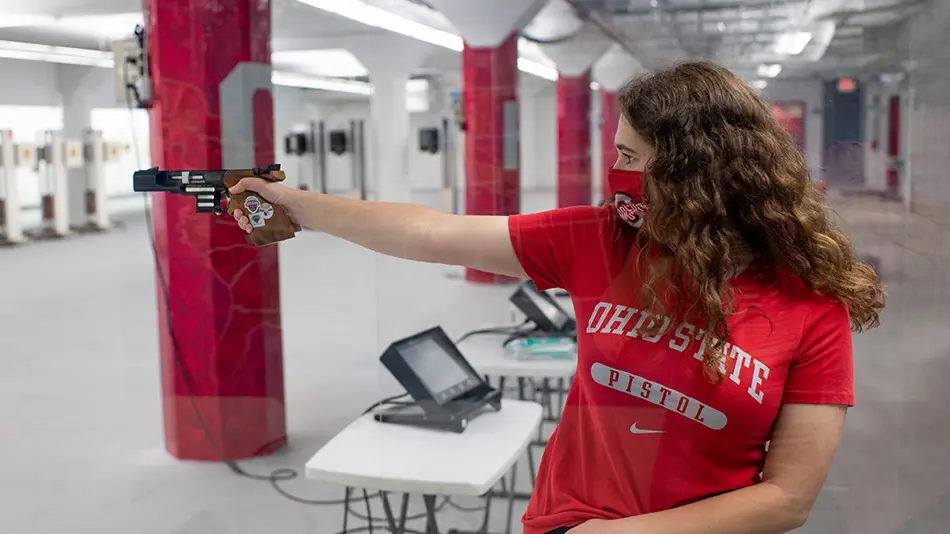
Pistol team co-captain Emily Nothnagle practices at Converse Hall. The psychology major has stepped up to help other student-athletes by providing resources and support. Photo by Jo McCulty
During regular team meetings with a sport psychologist, Emily Nothnagle and her fellow pistol teammates learned mindfulness techniques and ways to deal with anxiety. She also uses the Calm app to practice mindfulness daily and does simple meditations to get ready for a match or to fall asleep.
Eliminating the stigma tied to seeking help is a high priority for Nothnagle, and a new social media presence is just one way Sport Psychology and Wellness Services is working to destigmatize mental health problems. Houle’s team posts educational infographics, polls and daily tips on Instagram and Twitter in an effort to meet students where they already congregate.
“Student-athletes are a population in need of this type of health service, but people don’t think of it,” says Nothnagle, who volunteers with Student-Athlete Peer Educators, a group that provides resources on physical health, and Buckeye State of Mind, a mental health summit.
Through the past year, she helped provide resources and supported individual athletes when they needed it, finding creative ways to connect and to organize team activities even when athletes weren’t able to meet in person.
For Hayden, staying connected with his teammates proved invaluable in making it through his most stressful year yet. “My best resources were my other teammates,” he says. “It would have been a lot harder without them, if it was just me by myself dealing with it emotionally.”
Through Buckeye State of Mind, Nothnagle and other student-athletes connect struggling fellow athletes with resources, support systems and referrals to services or campus groups geared specifically to certain student populations.
“As athletes, they give us strength trainers, athletic trainers when we’re hurt, help with health and nutrition. But when it comes to mental health, for high-level athletes, there’s such a culture of ‘You need to tough it up, get over it,’” Nothnagle says. “It’s important for athletes to know you are allowed to feel this way. It doesn’t make you weak. A lot of other people are experiencing very similar things.”
Tips for resilience
This past year, Ohio State sport psychologist Jamey Houle witnessed the tremendous resilience of Ohio State student-athletes during a period of extreme uncertainty. Looking to build your resilience? Houle offers these suggestions:
- Start with a focus on overall wellness by getting good sleep and maintaining a balanced diet.
- Create a routine and stick to it. That can be as simple as waking up at the same time each day.
- Incorporate mindfulness techniques, such as breathing exercises and meditation, into your everyday routine to combat anxiety about the future by staying grounded in the present.
- Practice gratitude by journaling about things you’re thankful for, an exercise that can go a long way in developing a positive attitude toward life.
- Learn to accept and embrace the difficulties you face rather than fight them.
